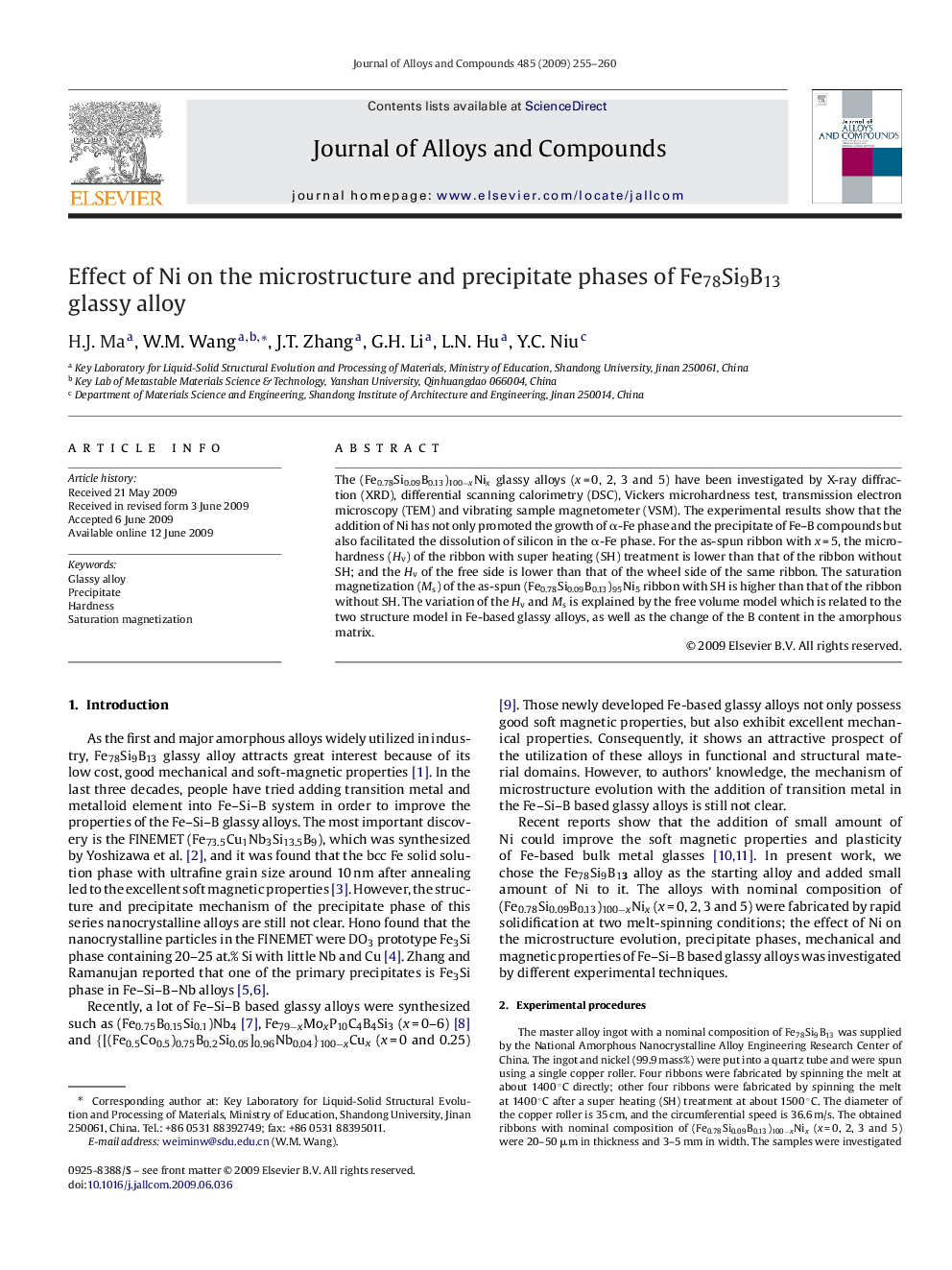| Article ID | Journal | Published Year | Pages | File Type |
|---|---|---|---|---|
| 1622082 | Journal of Alloys and Compounds | 2009 | 6 Pages |
The (Fe0.78Si0.09B0.13)100−xNix glassy alloys (x = 0, 2, 3 and 5) have been investigated by X-ray diffraction (XRD), differential scanning calorimetry (DSC), Vickers microhardness test, transmission electron microscopy (TEM) and vibrating sample magnetometer (VSM). The experimental results show that the addition of Ni has not only promoted the growth of α-Fe phase and the precipitate of Fe–B compounds but also facilitated the dissolution of silicon in the α-Fe phase. For the as-spun ribbon with x = 5, the microhardness (Hv) of the ribbon with super heating (SH) treatment is lower than that of the ribbon without SH; and the Hv of the free side is lower than that of the wheel side of the same ribbon. The saturation magnetization (Ms) of the as-spun (Fe0.78Si0.09B0.13)95Ni5 ribbon with SH is higher than that of the ribbon without SH. The variation of the Hv and Ms is explained by the free volume model which is related to the two structure model in Fe-based glassy alloys, as well as the change of the B content in the amorphous matrix.
